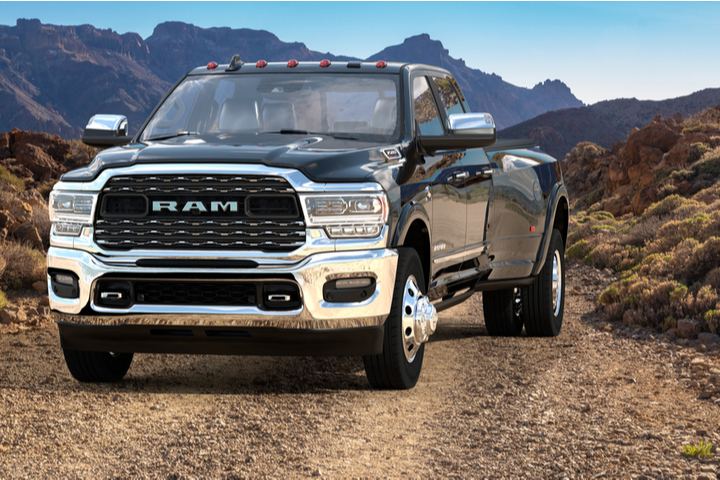The high-performance truck is the advanced version of trucks which consist of a high-performance traction system. The high-performance trucks are equipped with intelligent electric control systems and powerful motors which help them to complete the work efficiently. The high-performance trucks are those which are armed with an electric control system, powerful motors, and consist of traction system. They are widely used in applications like refrigeration, tanker, container, and ready mixed concrete (RMC). They are usually of two types medium-duty trucks, heavy-duty trucks, and pickup trucks. High-performance truck market is majorly driven by the customization of trucks and increase in investments made by the buyer for the modification.
Market scope and structure analysis:
Report Metric | Details |
Market size available for years | 2020–2027 |
Base year considered | 2019 |
Forecast period | 2021–2027 |
Forecast units | Value (USD) |
Segments covered | Type, Power Output, Application, Vehicle and Fuel |
Geographies covered | North America (U.S., Canada, and Mexico), Europe (Germany, UK, France, Russia, and Rest of Europe), Asia-Pacific (China, Japan, India, South Korea, and Rest of Asia-Pacific), LAMEA (Latin America, Middle East, and Africa) |
Companies covered | Volvo, Daimler, Scania, Paccar, MAN, Ford, GMC, FCA, Nissan, and Toyota |
COVID-19 scenario analysis:
- In many developing countries transportation plays a vital role in the economy and the lives of the people, due to lockdown it has created a huge impact with huge losses.
- The world aftercoronaviruswon’t be sustainable without improvements to air quality especially because the disease could cause lung damage for almost up to six months after being contracted.
- The transportation industry will eventually have to play its part in this transition with initiatives such as replacing diesel locomotives and decreasing emissions within and near its station.
- The transportation companies have the choice to consider the current crisis as an opportunity and completely overhaul their passenger and freight transportation segments. Hence, this is the right time to look beyond the current year and chart a growth map for the next five to 10 years.
- The transportation has possessed remarkable resource mobilization capabilities and disciplined manpower, which have demonstrated agility and ingenuity to completely new requirements that have occurred arose the globe in the fight against COVID-19.
Top impacting factors: Market Scenario Analysis, Trends, Drivers and Impact Analysis
Some of the factors that boost the market growth include stringent emission norms and significant infrastructure growth. However, electric high-performance trucksare anticipated to hamper the growth of the market. Furthermore, alternative fuel high-performance trucks and high-performance trucks for special applicationsare expected to offer lucrative opportunities for the marketgrowth.
The high-performance truck market trends are as follows:
Stringent emission norms
The heavy-duty emission standards are the most stringent diesel emission regulations in the world as they were enacted to reciprocate the effect on the environment. In addition, the emission norms are substantially instituted to regulate the output of air pollutants from internal combustion engine equipment, including automotive motor vehicles across the globe. Hence, the growing implementation of the norms across the globe is expected to foster the growth of the high-performance truck market
Significant infrastructure growth
The significant growth in the infrastructure is considered to be an important role in faster economic growth and alleviation of poverty in the country. Moreover, the adequate growth of infrastructure in the form ofrailway and road transport systems, ports, power, airports and their efficient working is also needed for integration of any economy with other economies of the world. Hence, the growing infrastructure of developing economies foster the growth of the high-performance truck marketas the adaption of these trucks has increased significantly and is expected to boost the market growth.
Key segments covered:
Segments | Sub-segments |
Type |
|
Power Output |
|
Application |
|
Vehicle |
|
Fuel |
|
Key benefits of the report:
- This study presents the analytical depiction of the high-performance truck market industry along with the current trends and future estimations to determine the imminent investment pockets.
- The report presents information related to key drivers, restraints, and opportunities along with a detailed analysis of the high-performance truck market share.
- The current market is quantitatively analyzed from 2020 to2027 to highlight the high-performance truck market scenario.
- Porter’s five forces analysis illustrates the potency of buyers & suppliers in the market.
- The report provides a detailed high-performance truck market analysis based on competitive intensity and how the competition will take shape in the coming years.
Questions answered in the high-performance truck market research report:
- What are the leading market players active in the high-performance truck market?
- What are the current trends that will influence the market in the next few years?
- What are the driving factors, restraints, and opportunities in the market?
- What are the projections for the future that would help in taking further strategic steps?
High-Performance Truck Market Report Highlights
| Aspects | Details |
| By Type |
|
| By Power Output |
|
| By Application |
|
| By Vehicle |
|
| By Region |
|
| Key Market Players | Nissan, Volvo, FCA, Paccar, MAN, Scania, Daimler, GMC, Toyota, Ford |
Loading Table Of Content...




